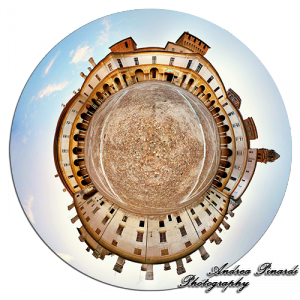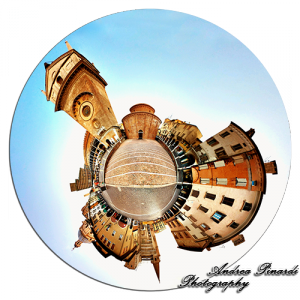
Want to spend time in some small towns in Italy? Go north! Although cities like Milan, Venice, and Verona get all the fame, northern Italy also boasts a number of enjoyable towns, situated between Emilia-Romagna and Lombardy, just like
MANTUA
Also known as Mantua, Mantova might be best-known to travellers as Romeo’s town of exile, from Shakespeare’s “Romeo and Juliet”. But there’s a lot more to explore than that! Mantova is filled with art and history. Better yet? Mantova is also a modern-day model for Italian daily life; the town is ranked as having a very high quality of life in the country.
MANTUA, POETIC CITY EMERGING FROM WATERS:
When you come from the Bridge of S. Giorgio in Mantua, a small provincial capital in the south east of Lombardy, with wonder it turns out that it is an ancient city built on water, and this aquatic element makes it so peculiar! Founded on the banks of the river Mincio, outlet of Lake Garda, in the heart of the fertile lower Po valley once swampy, Mantua derives its name from the Etruscan God of the Underworld Mantus. At the end of the 12th century the hydraulic engineer Alberto Pitentino is called to create a system of protection of the city against flooding and to avoid marshes; so four artificial lakes are created to surround the entire city center, making it like a little Venice. Today Mantua keeps the appearance of a peninsular city and is still lapped by three lakes: Upper, Middle and Lower.
Mantua is recognized for being the birthplace of the famous Latin poet Virgil, but is best known as the “capital of the Gonzaga family”, Lords of Mantua for almost four centuries, major collectors and patrons of arts who have made it one of the most refined and cultivated italian Courts during Renaissance.
Mantua retains an extraordinary artistic and cultural heritage thanks to prestigious artists required to work at the Gonzaga Court as Andrea Mantegna, Leon Battista Alberti, Giulio Romano and many others. This noble past of refinement and good taste is still evoked by picturesque squares, elegant streets and especially beautiful old buildings of the historical center; for all that Mantua has been recognized as an Unesco World Heritage Site in 2008.




ITINERARY TO DISCOVER MANTUA AND ITS ARTISTIC JEWELS
Please follow me! We will start together discovering this fascinating city, where the beauty of the Arts contends the primacy of the goodness of its renowned Cuisine!

HISTORICAL CENTER

 Our sightseeing in the historical center can therefore start from Piazza Sordello, the largest old square of Mantua paved with river stones, severe and monumental, the very political and religious heart of the city for centuries. The square is dedicated to the medieval poet Sordello from Goito, and is overlooked to the West side by the Tower of the Cage, famous for its use as a prison cage outside, then the Palazzo Acerbi followed by Palazzo Bonacolsi and the Bishop’s Palace, recognizable by neoclassical façade where two mighty atlases supporting a balcony stand; to the North side is the ancient St. Pieter Cathedral with the Romanesque bell tower, and to the East we can admire the oldest palaces of the Gonzaga Residence, named Palazzo del Capitano del Popolo and Magna Domus. Piazza Sordello was actually the site of the Roman Civitas Vetus and till the end of 14th century it was occupied by houses and streets. The Gonzaga demolished the neighborhood to get a large space for bringing out their stately mansions and increasing the prestige of their power as well. Overcoming the Arch of St. Peter, we leave the ducal citadel to get through the Communal Town, alongside the “Strada del Principe”, where we meet the typical Piazza Broletto and Piazza delle Erbe (Broletto and Herbs Square), administrative and commercial hub of activities away from the Middle Ages. Here we find ancient embattled palaces such as Palazzo dell’Arengario, Palazzo del Podestà, and Palazzo della Ragione; then we see nearby beautiful churches as the Rotunda of S. Lorenzo, with its unmistakable circular plant and terracotta cladding, and the solemn Basilica of S. Andrea, an architectural masterpiece designed by architect Leon Battista Alberti, rebuilt to preserve worthily a precious relic of the Blood of Christ. We continue our trip towards the charming Goldsmiths Street to reach the ancient Renaissance Pescherie planned by architect Giulio Romano, to admire a winding medieval canal, dug for navigation and fishing: the Rio. Before stopping for a well deserved lunch break, devoted to tasting some of the delicious dishes of the local cuisine (pumpkin ravioli pasta, risotto alla pilota, Mantuan salami, Grana Padano cheese, luccio in salsa and sbrisolona), we can complete this guided tour, by sitting comfortably in the parterre of the Scientific Theatre, designed by architect Antonio Galli Bibiena, a delicious theatrical rococo jewel of the Habsburg period.
Our sightseeing in the historical center can therefore start from Piazza Sordello, the largest old square of Mantua paved with river stones, severe and monumental, the very political and religious heart of the city for centuries. The square is dedicated to the medieval poet Sordello from Goito, and is overlooked to the West side by the Tower of the Cage, famous for its use as a prison cage outside, then the Palazzo Acerbi followed by Palazzo Bonacolsi and the Bishop’s Palace, recognizable by neoclassical façade where two mighty atlases supporting a balcony stand; to the North side is the ancient St. Pieter Cathedral with the Romanesque bell tower, and to the East we can admire the oldest palaces of the Gonzaga Residence, named Palazzo del Capitano del Popolo and Magna Domus. Piazza Sordello was actually the site of the Roman Civitas Vetus and till the end of 14th century it was occupied by houses and streets. The Gonzaga demolished the neighborhood to get a large space for bringing out their stately mansions and increasing the prestige of their power as well. Overcoming the Arch of St. Peter, we leave the ducal citadel to get through the Communal Town, alongside the “Strada del Principe”, where we meet the typical Piazza Broletto and Piazza delle Erbe (Broletto and Herbs Square), administrative and commercial hub of activities away from the Middle Ages. Here we find ancient embattled palaces such as Palazzo dell’Arengario, Palazzo del Podestà, and Palazzo della Ragione; then we see nearby beautiful churches as the Rotunda of S. Lorenzo, with its unmistakable circular plant and terracotta cladding, and the solemn Basilica of S. Andrea, an architectural masterpiece designed by architect Leon Battista Alberti, rebuilt to preserve worthily a precious relic of the Blood of Christ. We continue our trip towards the charming Goldsmiths Street to reach the ancient Renaissance Pescherie planned by architect Giulio Romano, to admire a winding medieval canal, dug for navigation and fishing: the Rio. Before stopping for a well deserved lunch break, devoted to tasting some of the delicious dishes of the local cuisine (pumpkin ravioli pasta, risotto alla pilota, Mantuan salami, Grana Padano cheese, luccio in salsa and sbrisolona), we can complete this guided tour, by sitting comfortably in the parterre of the Scientific Theatre, designed by architect Antonio Galli Bibiena, a delicious theatrical rococo jewel of the Habsburg period.

PALAZZO DUCALE (DUCAL PALACE)
 a family, is an unexpected must-see, and its location overlooking the lakes makes it even more fascinating!
a family, is an unexpected must-see, and its location overlooking the lakes makes it even more fascinating!
It consists of a set of buildings constructed over the centuries, from the 13th to the 17th centuries, built by the Gonzaga Lords as their magnificent official residence for almost four centuries. The buildings are connected by corridors and galleries, the interiors are embellished with arcades and gardens. The most famous frescoes are those of the Camera degli Sposi (Bridal Chamber), entirely decorated by court painter Andrea Mantegna. They are considered one of the most important masterpieces of Italian painting of the 15th century, and they are preserved in the Gothic fortress of San Giorgio Castle.

After the Baroque staircase of the Duchesses leading to the main floor, through the Hall of Ancestors with portraits of the Gonzaga dynasty, we enter the Pisanello’s Hall decorated with frescoes of the Knights of the Round Table. Later comes the Hall of Archers, antechamber of the Ducal Apartment at the time of Vincenzo I, leading us to the beautiful Hall of Mirrors, which surprised everyone with its illusionistic paintings and the magnificence of its decoration. Yet emotions in the painted Zodiac Room for the night starry ceiling and the bed of Napoleon Bonaparte and again the Hall of Rivers, summer dining room built for Duke Guglielmo I, remarkable for the presence of one of the rare “roof gardens” in Renaissance Courts. Finally we don’t overlook to admire the extraordinary Raphael Tapestries, wool and silk, displayed in the Apartment of the Tapestries.



PALAZZO TE (TE PALACE)

Other artistic hub in Mantua, that deserves to be suitably explained is Palazzo Te, a suburban villa devoted to the pleasures of leisure. Architect Giulio Romano, as the heir of his great master Raphael, is called from Rome to build and decorate this Renaissance villa between 1525 and 1535, inspired by ancient Roman villas.
Palazzo Te is an exemplary model of the Mannerist style as about architecture and an outstanding example of 16th century Italian painting. The name of the building derives from that of the place where it was built: the “island of Tejeto”, abbreviated as “Te”, where mantuan Lords held the ducal stables for the breeding of famous Gonzaga thoroughbred trained for battlefields and tournaments.
The interior contrasts with the sober exterior for a cycle of frescoes very amazing, inspired by the mythological fables of Ovid and Apuleius, the result of ingenious imagination of Giulio Romano. Among the most evocative rooms in which to focus our attention on: the Hall of Sun, the Hall of Horses and the Hall of Cupid and Psyche to conclude with the most unexpected, the Hall of Giants, where the Titans who rebel against Zeus have to suffer its terrible anger. The impression is that of a giant cartoon full of bright colours! Palazzo Te was first the alcove of love devoted to the “Favorita of the Prince”, Isabella Boschetti, for a sensual love affair surrounded by green woods and refreshed by waters; later it also became a luxury palace of representation, consecrated to guests of rank as the Emperor Charles V of Habsburg crowning Frederick, as the First Duke of the Gonzaga dynasty in 1530.


